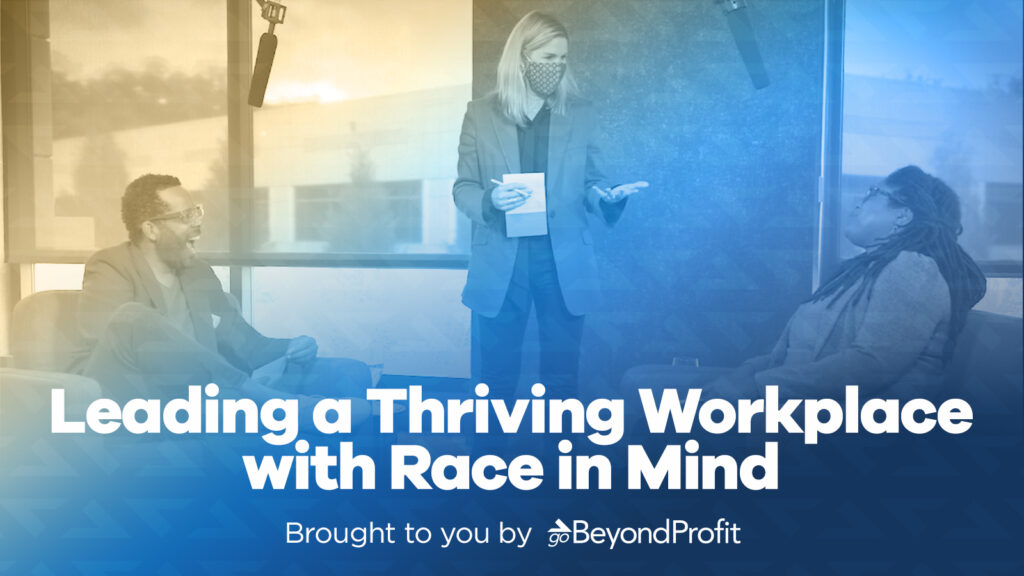Self-discovery for Inclusive Leadership: Could unknown bias be hindering your workplace?
by Darah Okeke, Esq. of EPIQ Consulting, and
Matthew Harrison, Ph.D. of Jackson Healthcare
Workplace Diversity, Equity & Inclusion Advisors
People management is one of the hardest aspects of leadership yet holds the greatest potential upside if you get it right. Inclusive leadership could be an essential asset to expand in your repertoire.
Research shows that inclusive leadership can improve collaboration, increase motivation and productivity, inspire innovation and creativity, promote employee engagement and loyalty, and enhance the potential to capture market share (Opportunity Now and Shapiro Consulting, Inclusive Leadership: Culture Change for Business Success, 2014).
We’re sure you’re thinking, “That sounds amazing…but what exactly is inclusive leadership?”
Leading inclusively means: 1) being aware of your own biases and preferences; 2) actively seeking out and considering perspectives different from your own to better inform your decision-making; and 3) committing to override your biases and ensure that everyone on your team is treated equitably, feels a sense of belonging, and has the resources and support they need to achieve their full potential at work (Employers Network for Equality & Inclusion (ENEI), Inclusive Leadership…Driving Performance Through Diversity!, 2016).
What’s particularly tricky about this is we’re not even aware of many of our biases.
Unconscious biases are invisible, inner thoughts that operate outside of our conscious awareness, inform our opinions, and have the tendency to influence our actions and decisions.
We offer three practical steps to begin your inclusive leadership journey, starting with that first part of inclusive leadership: awareness of your own biases.
Step 1: Be a Life-Long Learner
As a first step, learn more about your instincts and preferences.
This is one area where your instincts won’t help you; in fact they can do more harm than good.
In the workplace context, a subconscious hiccup here or there may seem like just an innocent mistake. But, just one employment decision influenced by unconscious bias has the potential to create a chain reaction of discriminatory results that could cause significant harm to a person or group of people.
For that reason, it is critical that we identify our individual biases so we can interrupt them in our real life decision-making and avoid unfair and prejudiced outcomes.
For most people, it’s uncomfortable to explore our own biases. Especially because, frequently, our biases do not align with our conscious beliefs and convictions. With a willingness to learn you can transform your behaviors, and thereby the work experiences of your employees, for the better.
If you’re ready to learn more about your own biases, check out the resources below.
- Implicit Association Test (IAT)
An IAT is a psychological assessment that measures social attitudes and beliefs you may be unable to consciously realize you possess. There is no way to fail an IAT. The results are not foolproof or necessarily conclusive. The test simply lets you know where your subconscious beliefs may fall on a spectrum. Project Implicit, founded at Harvard University, is one of many organizations that offers IATs to assess cognitive biases.
- Substitution Method
The Substitution Method is a personal tool by which you imagine the same work scenario but substitute a different person. For example, imagine that you’re reviewing the resume of a 57-year-old for an important mid-level role on your team. Ask yourself, “If I substituted the 57-year-old for a 31-year-old, would I still feel the same way about this candidate? Would I still make the same decision?” If the answer is “No,” the reason could be unconscious bias.
- Network Analysis
Another way to check your bias is to analyze your informal networks. List a handful of trusted people you know – whether from work or elsewhere – that you would call if you needed a listening ear or sage advice. Then categorize that list of people by age, race, gender, sexual orientation, education, etc. Most people discover that their list is quite homogenous and largely reflects their own identities and characteristics. This could be an example of affinity bias – the unconscious tendency to get along with others who are like us. You can interrupt this bias by expanding your network and developing relationships with a variety of people who are different from you.
Step 2: Create a Bias Breaker List
As you uncover your biases, it’s time to list them so you can break them with inclusive decisions and behaviors. We like to call this the Bias Breaker™ List.
Lest you want to skip this step, we’ll remind you that research shows you’re 42% more likely to achieve your goals when you write them down. (Peter Economy, This Is the Way You Need to Write Down Your Goals for Faster Success, 2018).
First, create a document with three columns. In the first column, titled “Biases,” list your known biases one by one – subconscious (as determined from IAT(s) and other tools) and explicit (those biases you are fully aware of). These might include biases about gender, sexual orientation, race or skin color, weight, age, and the list goes on. (Catalyst, 11 Harmful Types of Unconscious Bias and How to Interrupt Them, 2020; Time, The Difference Between Racism and Colorism, 2016).
In the second column of your Bias Breaker List, titled “Examples,” write real and hypothetical examples of how each of your biases could show up at work. For instance, if you have an unconscious racial bias against Black people, you might be more likely to unknowingly disregard a qualified job candidate’s resume if they have what you consider a traditionally Black or African-American sounding name. If you have a beauty bias, you might be more likely to assign important, high priority projects to those team members you find to be more physically attractive, or give those individuals the benefit of the doubt when they make mistakes at work.
Title the third column “Bias Breakers.” Here you should list those steps you’ll take to break bias in the moment or before you make a decision that could be influenced by explicit or unconscious bias. Be thoughtful and creative here. Bias breaking requires proactive solutions to ensure objectivity and fairness.
Here’s a fictional Bias Breaker List example you might find helpful.
You don’t have to share your Bias Breaker List with anyone. It’s for your personal edification and evolution as an inclusive leader. Refer to it and update it often, especially before you make decisions that might impact others at work.
Step 3: Connect With Others
One thing is for sure – you’re not alone on this journey to become a more inclusive leader.
Bill Withers said it best: “We all need somebody to lean on,” especially on the first steps of our journey. Here are some supports and connections to consider:
- Phone a Friend
Find peer support in a friend or coworker you trust. Perhaps you have a gym partner or neighbor who is interested in starting this inclusive leadership journey with you. The more the merrier! Work as collaborators to lift up and challenge each other with new ideas and ways of thinking.
- Find a Mentor
There will always be someone who knows more than you about any given subject. This is especially true in the area of inclusive leadership. Identify wise and trusted confidantes who have more experience when it comes to leading with diversity, equity and inclusion in mind. They can provide guidance and encouragement while constructively calling out your missteps and misconceptions along the way.
- Be a Sponsor
Like mentors, sponsors give feedback and advice. But they do more than share their knowledge and experience — they use their influence with other senior leaders to ensure that sponsored individuals are visible to key decision-makers and to advocate for their promotion to important roles. When you sponsor a promising employee from an underrepresented group, you have the opportunity to wield your power on behalf of your protégé to actively champion their advancement. You also get the chance to develop a lasting and meaningful relationship of trust with someone different from you, enhance the diversity of your network, and practice your bias-breaking skills.
Remember: inclusive leadership is not a destination. It’s an ongoing journey that leads to a happier and healthier team.


